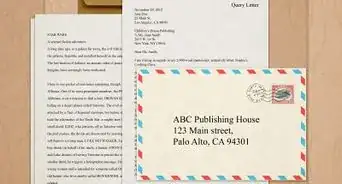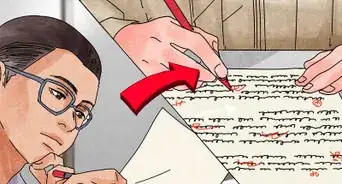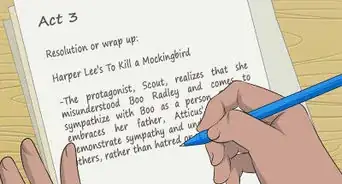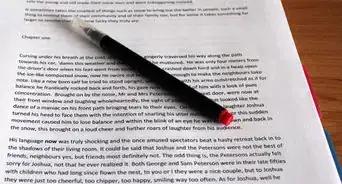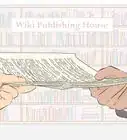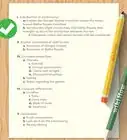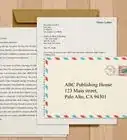This article was co-authored by Stephanie Wong Ken, MFA. Stephanie Wong Ken is a writer based in Canada. Stephanie's writing has appeared in Joyland, Catapult, Pithead Chapel, Cosmonaut's Avenue, and other publications. She holds an MFA in Fiction and Creative Writing from Portland State University.
There are 7 references cited in this article, which can be found at the bottom of the page.
wikiHow marks an article as reader-approved once it receives enough positive feedback. In this case, 95% of readers who voted found the article helpful, earning it our reader-approved status.
This article has been viewed 42,016 times.
Diving into writing a novel can feel like a daunting task, especially if you are new to writing. You may not be sure how to tackle a novel or where to begin. Starting a novel can be done more effectively if you do a bit of planning first, like creating your characters and your setting as well as plotting out the novel. You can then sit down and write a strong opening for the novel to help get you going.
Steps
Generating Ideas for the Novel
-
1Do writing exercises. To generate ideas for your novel, do writing exercises using writing prompts. Create your own writing prompts or use existing writing prompts to get your creative juices flowing. Sit down and do timed free writes using the writing prompts so you can start to get your ideas down on the page.
- For example, you may do writing prompts that focus on creating a specific element of your novel, such as character or setting. A writing prompt about your main character’s worst day ever may be a good way to generate scenes with the main character for your novel.
- You can find a list of writing prompts at Writer’s Digest.com.
-
2Develop an engaging main character. Think about who is going to populate your novel. Who is your main character? What do they want? What kind of story will they tell? Build your main character and use them as a driving force in your novel.[1]
- Give your main character a name, a gender, a profession or something that occupies their time, such as school or college.
- Determine their physical attributes, such as their height, weight, eye color, and skin tone. Think about what clothing they wear and any personal items that they carry with them or have around often.
- Give your main character a backstory that includes past memories, experiences, and important moments. For example, you may have a main character who had a traumatic childhood. You may not include the backstory in your novel but it can help you flesh out your main character more on the page.
Advertisement -
3Create a central conflict. Brainstorm a central conflict for your novel. What does your main character want? What do your other characters want in the world of the novel? What are the obstacles that will make it difficult for your characters to get what they want? Having a central conflict or problem in the novel will raise the stakes for the reader and motivate them to continue reading.[2]
- For example, you may have a novel set in a dystopian future where abortion is illegal all over the world. You may then have a character who needs an abortion but is unable to do so safely and legally in the world of the novel. The central conflict of the novel will then be her attempt to get an abortion by other, illegal means.
-
4Pick a specific setting. Focusing on a specific setting can help you flesh out the world of your novel. Think about where you want to set your novel and in what time period. Maybe you want to set the novel in the past, in a small town based on your hometown. Or perhaps the novel will be set in the future, in a big American city. Choose a setting and determine the details of the setting for the novel.[3]
- For example, you may choose a setting that uses landmarks in New York City and make them more futuristic. You may then put a bubble over New York City, which will limit how your characters can move in and out of the city on their own.
-
5Focus on a central theme. Consider focusing on a central theme in your novel, such as love, loss, grief, or connection. Make the theme specific to your characters and your setting. Think about how you can explore a central theme through scenes in your novel and through the actions of your characters.[4]
- For example, you may have characters who are a family of immigrants living in a small American town. You may then explore themes like identity, family loyalty, and love through your characters and your setting.
-
6Choose a specific genre. To help you get ideas for your novel, you may select a genre that you enjoy reading and write the novel within that genre. For example, if you like reading historical romance novels, you may decide to write your own historical romance novel. If you enjoy science fiction novels, you may try your hand at writing science fiction.
- There are a wide range of genres in writing, from literary fiction to science fiction to romance to crime to thriller. You may read books in a few genres to find the one that speaks to you as a writer.
Organizing Your Novel
-
1Use a plot diagram. A plot diagram can help you organize your novel and identify the key moments in your novel. You can then use the plot diagram to help you write the novel. A plot diagram has six main sections: the setup, the inciting incident, the rising action, the climax, the falling action, and the resolution. Identify each section in your novel to help you plot out the story.[5]
- For example, you may have a setup like a college student returning home to their small American hometown in time to celebrate Ramadan with their family. The inciting incident may then be the impending death of her mother. The rising action could be the college student’s lack of connection to her family and friends.
- The climax could be the death of her mother. The falling action could be dealing with the death of her mother. The resolution could be the college student’s decision to remain in the small town and care for her remaining family members.
-
2Make a chapter by chapter plan. Another way you can organize your novel is to make a chapter by chapter plan that you can follow. Break down your novel into chapters and make headings for each chapter. Then, create an outline for each chapter that notes the basic action of the chapter as well as the characters involved and the setting. When you start writing, you can fill in the gaps in each chapter.[6]
- For example, you may have Chapter 1: Introduction of Main Character, where you introduce your main character and the setting to the reader. You may then have Chapter 2: Exploration of the Setting, where you delve more into the setting and the minor characters.
-
3Try the snowflake method. The snowflake method may be a good option if you are looking for another approach to plotting out your novel. The snowflake method consists of: a one sentence summary of the novel, a one paragraph summary of the novel, character synopses, and a spreadsheet of scenes. These four elements can help you get a better sense of where your novel is headed, making the actual writing of the novel much easier.[7]
- For example, you may have a one sentence summary of your novel like, “A young Muslim woman returns to her small American hometown and tries to reconnect with her family.” You can then extend this one sentence summary to create a one paragraph summary, character synopses, and a spreadsheet of scenes.
Writing a Strong Opening For the Novel
-
1Create an engaging opening line. The first sentence of your novel will act as guidepost for your reader. It should present the tone, voice, and style of the novel. It should also keep the reader engaged and make them want to read more. You want an opening line that is not boring or familiar.[8]
- For example, you may have an opening line that states an interesting fact about your main character or your setting. Carson McCullers’ The Heart is a Lonely Hunter has a compelling opening line that states a fact about the setting and her characters: “In the town there were two mutes, and they were always together.”
- Another option is to have an opening line that introduces the voice and style of the narrator. Vladimir Nabokov’s Lolita is a good example of this, with the opening line, “Lolita, light of my life, fire of my loins.”
-
2Start with action. Begin your novel with danger, action, or surprise. Start mid-scene or at a crucial point in a scene. Have your main character doing something dangerous or provocative. Show your main character making a crucial decision. Introduce the reader to the world of the novel through action so they are carried away and keep reading.[9]
- For example, you may start with your character making the decision to return to their hometown, despite their complicated feelings towards their family. Or you may begin with a character hurrying to catch a train back to their hometown, a frantic rush to the station that will keep the reader engaged.
-
3Begin with dialogue. Another way you can opening your novel is to start with interesting dialogue. Have your main character speak to another character at a crucial point in a scene. Choose dialogue that will set the tone and mood for the novel. This way, your reader will be interested in your story right away. Make sure the dialogue introduces setting and character.[10]
- For example, you may have an opening line like, “‘You missed the train again,’ Melanie said to her sister, Ness.” This opening line introduces both characters, their relationship, and a conflict or issue.
-
4Leave the reader with questions. A good opening for a novel will leave the reader wanting more. It will also present questions or complications that will be teased out over the course of the novel. Try not to pack too many details or moments into your opening scene. Instead, present just enough to motivate the reader to keep going and to help them stay grounded in the world of the novel.[11]
- One option is to start with an opening that lays out most of the main plot. Then, revise it so only the most necessary information is still present in the opening, but the reader is left wondering about the main plot as a whole. Taking out a few details can make your opening stronger and more engaging.
Community Q&A
-
QuestionHow do I write an introduction for a novel?
 Community AnswerDepends on what kind of novel you're writing. If you're writing an action novel, you should start with an intense, action based scene. If you're writing a drama, you should start by introducing all the characters so nobody gets confused. There are a lot of sources online to find good introductions, try a random first sentence generator to get your ideas going!
Community AnswerDepends on what kind of novel you're writing. If you're writing an action novel, you should start with an intense, action based scene. If you're writing a drama, you should start by introducing all the characters so nobody gets confused. There are a lot of sources online to find good introductions, try a random first sentence generator to get your ideas going! -
QuestionHow do I begin a fantasy novel?
 Community AnswerStart with the setting, then introduce one or two of your characters. For example, "The river sparkled and the forest was quiet, when suddenly, a deafening roar spoiled the moment. 'Cover me,' yelled a woman's voice. The forest was suddenly alive!"
Community AnswerStart with the setting, then introduce one or two of your characters. For example, "The river sparkled and the forest was quiet, when suddenly, a deafening roar spoiled the moment. 'Cover me,' yelled a woman's voice. The forest was suddenly alive!" -
QuestionWhat are some examples of a starting sentence/paragraph?
 Community AnswerSomething like "The first day of school was the best day of my life." Something that makes the reader want to read more.
Community AnswerSomething like "The first day of school was the best day of my life." Something that makes the reader want to read more.
References
- ↑ http://writetodone.com/how-to-start-novel/
- ↑ http://writetodone.com/how-to-start-novel/
- ↑ http://writetodone.com/how-to-start-novel/
- ↑ http://writetodone.com/how-to-start-novel/
- ↑ https://www.scribendi.com/advice/theplotskeleton.en.html
- ↑ http://www.nownovel.com/blog/7-ways-write-plot-outline/
- ↑ http://www.advancedfictionwriting.com/articles/snowflake-method/
- ↑ http://www.writersdigest.com/online-editor/7-ways-to-create-a-killer-opening-line-for-your-novel
- ↑ https://janefriedman.com/begin-with-action/
About This Article
To begin a novel, try to come up with a first line that engages the reader’s interest while introducing the style of the narrator, like in Nabakov’s line, “Lolita, light of my life, fire of my loins." Additionally, consider starting the story in the middle of some action, like a character rushing to catch a train or being surprised by something, so that the reader becomes enthralled right away. Alternatively, try starting with interesting dialogue, such as "You missed the train again!" to make the reader want to know more about the characters. For more advice, including how to use writing prompts to come up with ideas for a novel, read on!
















